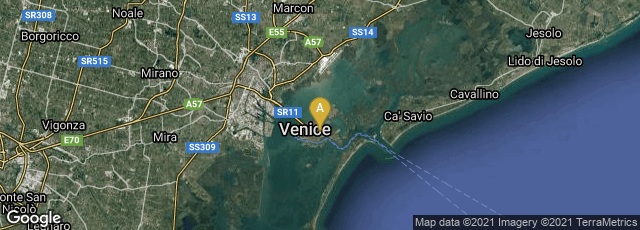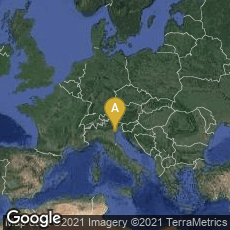

In 1525 printer Andrea Torresani di Asolo (Andreas Asulanus) of Venice, father-in-law and partner of Aldus Manutius (Aldo Manuzio, Aldus Pius Manutius) issued the editio princeps of the collected writings of Galen in the original Greek, Galeni librorum pars prima-quinta. The five-volume set represented the largest single body of text issued by the Aldine press, which had by then passed into the hands of Torresani (Asulanus), Aldus having died in 1515 before he could fulfil his long-held desire to issue a new edition of Galen. The challenge of producing the new edition was immense, as the writings of Galen represent twenty-five percent of all surviving Greek literature, and issuing the entire set in one year had to amplify the challenge.
Torresani, with the help of his sons Francisco and Frederico, continued Aldus’s scholarly tradition, bringing out a number of Greek literary and historical editiones principes; “but whereas the family’s not unlimited linguistic expertise might have sufficed to produce creditable editions of geographers and poets, it was clearly not up to the challenge the works of Galen presented. . . . To meet this challenge, the Pavian professor of medicine G. B. Opizzoni (ca. 1485-ca. 1532) was placed in charge of a large group of assistants recruited mainly from northern medical scholars then studying in Italy: John Clement , Edward Wotton, William Rose (ca. 1490-1525), and Thomas Lupset, all Brittani and followers of Thomas Linacre, and the Saxon Georg Agricola of De re metallica fame. . . . The significance of the first printing of a classical author cannot be overestimated, especially a prolific one like Aristotle or Galen, whose works were not to be found in a single or even very few manuscripts, but had to be pieced together from as many manuscripts as the printer could lay his hands on. Not only did the texts of these authors go from being the private reserve of a few fortunate manuscript-owners and their friends to being available throughout the scholarly world—and that in a standard, corrected form—but their survival from the naufragium of the middle ages was once and for all assured” (Paul Potter, in Norman, 100 Books Famous in Medicine, no. 5). The Aldine Greek Galen was quickly adopted as authoritative, and was relied on heavily by subsequent translators of Galen’s works.
It was the custom of early printers to print directly from early manuscripts, and after the edition was completed many printers discarded the manuscript(s) from which they worked, at great loss to philologists. Nevertheless, one of the manuscripts used for printing of a portion of the Aldine Galen, the 15th century codex Reginensis Vaticanus Graec. 173, survived in the Vatican Library. In his A Companion to Classical Texts (1913) plate V, p. 105, F. W. Hall reproduced a page from that manuscript showing how the editors marked up the manuscript for the printer. As Hall wrote in his footnote 2,
"The codex was used as the copy for Galen's commentary on Hippocrates Περι Φμξεως ανθρωπον. The initial words of proper names have been indicated in captial letters in the margin; the Lemmata (or text of Hippocrates) upon which Galen is commenting have been written in full in the margin, since the writer of the codex had only given the beginning and ending; spellings are altered in the text; and the printer's signature of sheet 13Aa is written in the margin and marked by a bracket in the text."
Renouard, p. 101. Ahmanson-Murphy 202-203. Stillwell III-374.